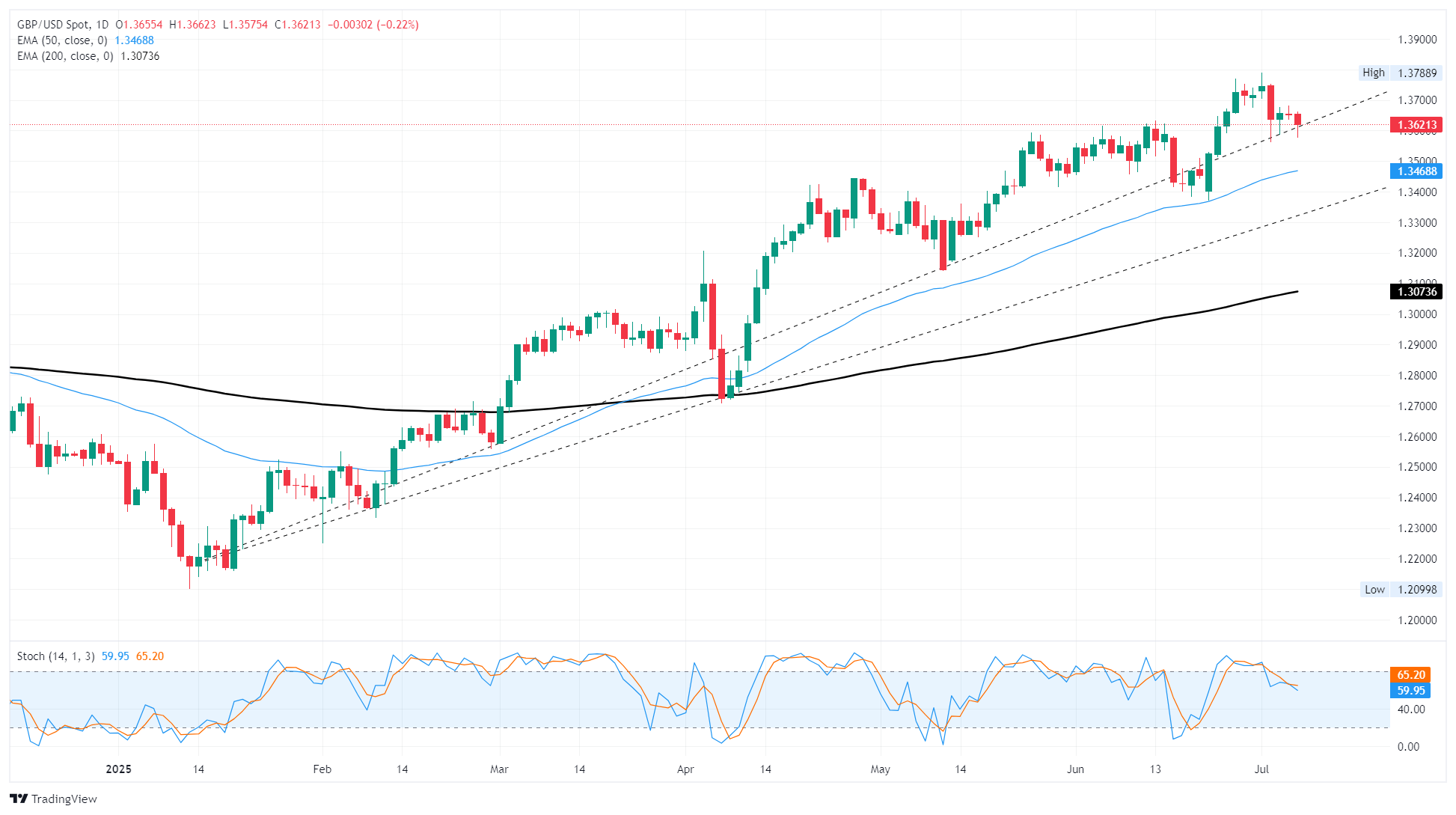GBP/USD pauses losses as Trump’s tariff threats increase risk aversion
- GBP/USD caught a foothold on Monday, halting a near-term pivot into the low side.
- Fresh trade war rhetoric from the Trump administration has sparked fresh risk aversion in global markets.
- The July 9 tariff deadline has already been kicked down the road, but fresh tariffs now loom ahead.
GBP/USD shed some weight on Monday, trimming further into the low side and adding onto near-term losses as Pound Sterling bulls take a breath. Losses were contained in early-week trading; however, a fresh bout of tariff threats from US President Donald Trump has crimped investor risk appetite, curbing topside market flows and sparking a fresh risk-off push into the US Dollar.
The Trump administration hit the ground running this week, pushing back its own self-imposed July 9 deadline for the restart of wide-ranging reciprocal tariffs that were initially announced and then immediately delayed in early April. Despite yet another pivot on “firm” deadlines for tariffs from the Trump team, President Trump has announced a fresh batch of additional tariffs, adding double-digit tariff levels to take effect on April 1 alongside the suspended reciprocal tariffs.
The economic data docket remains fairly limited this week. Market focus will be trained firmly on trade war rhetoric from the Trump administration, though the Federal Reserve’s (Fed) latest Meeting Minutes, which will be released on Wednesday, will draw some attention from traders looking to further gauge how near (or far) the Fed is from cutting interest rates.

GBP/USD price forecast
Despite a near-term rotation into intraday weakness, GBP/USD continues to hold onto the high end. The pair is trading well above the 50-day Exponential Moving Average (EMA) near 1.3465, and an immediate price floor is priced in from the 1.3600 handle. Long-term bullish trendlines are still holding firm, but Cable could be due for a steeper correction as technical oscillators ease back from overbought territory.
GBP/USD daily chart

Pound Sterling FAQs
The Pound Sterling (GBP) is the oldest currency in the world (886 AD) and the official currency of the United Kingdom. It is the fourth most traded unit for foreign exchange (FX) in the world, accounting for 12% of all transactions, averaging $630 billion a day, according to 2022 data. Its key trading pairs are GBP/USD, also known as ‘Cable’, which accounts for 11% of FX, GBP/JPY, or the ‘Dragon’ as it is known by traders (3%), and EUR/GBP (2%). The Pound Sterling is issued by the Bank of England (BoE).
The single most important factor influencing the value of the Pound Sterling is monetary policy decided by the Bank of England. The BoE bases its decisions on whether it has achieved its primary goal of “price stability” – a steady inflation rate of around 2%. Its primary tool for achieving this is the adjustment of interest rates. When inflation is too high, the BoE will try to rein it in by raising interest rates, making it more expensive for people and businesses to access credit. This is generally positive for GBP, as higher interest rates make the UK a more attractive place for global investors to park their money. When inflation falls too low it is a sign economic growth is slowing. In this scenario, the BoE will consider lowering interest rates to cheapen credit so businesses will borrow more to invest in growth-generating projects.
Data releases gauge the health of the economy and can impact the value of the Pound Sterling. Indicators such as GDP, Manufacturing and Services PMIs, and employment can all influence the direction of the GBP. A strong economy is good for Sterling. Not only does it attract more foreign investment but it may encourage the BoE to put up interest rates, which will directly strengthen GBP. Otherwise, if economic data is weak, the Pound Sterling is likely to fall.
Another significant data release for the Pound Sterling is the Trade Balance. This indicator measures the difference between what a country earns from its exports and what it spends on imports over a given period. If a country produces highly sought-after exports, its currency will benefit purely from the extra demand created from foreign buyers seeking to purchase these goods. Therefore, a positive net Trade Balance strengthens a currency and vice versa for a negative balance.
